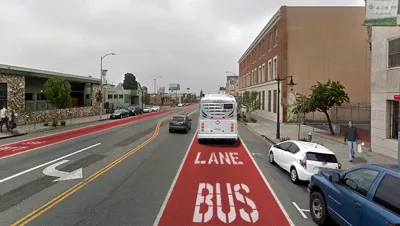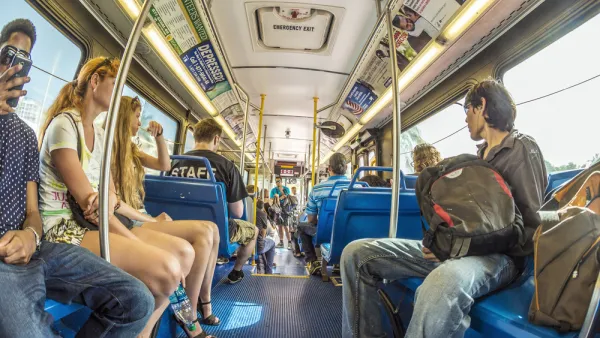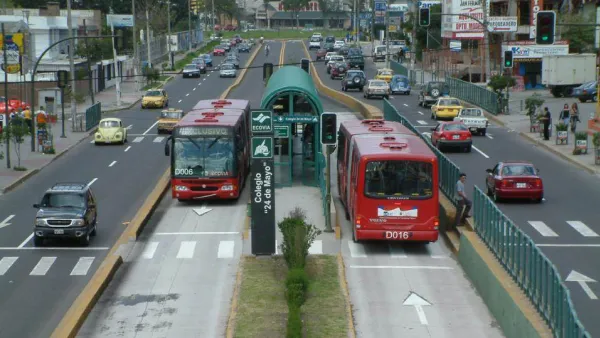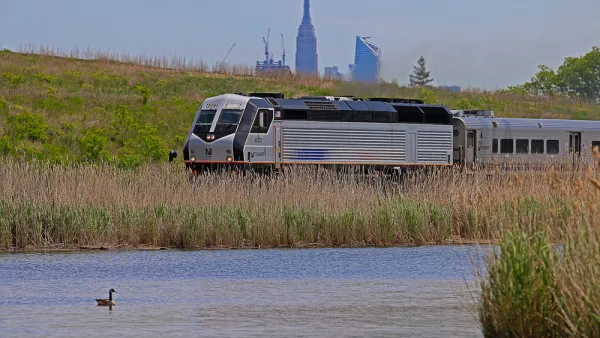More buses and trains alone won't bring back riders; other incentives are needed to boost ridership and encourage new users.

"[N]ew federal spending on transit could mean faster, cleaner, more reliable and more numerous buses and trains," but this may not be enough to bring back riders. Thomas Day argues that state and local governments must also address other issues: "ensuring that lower-income residents can afford to live in central cities, removing parking from many urban streets, and reducing or eliminating transit fares."
"To make the federal spending on transit work, [policymakers] will need to make decisions around land use and affordable housing that will be far less popular" than those around transit, Day writes. "In 2020, suburbs of the 55 U.S. cities with metropolitan populations above 1 million grew at five times the pace of urban centers, according to data analyzed by the Brookings Institution’s William Frey," putting more dependent transit riders farther away from central cities. "If there indeed is a direct relationship between lower-income residents moving away from urban centers and the decline in transit ridership, local officials will need to work harder to ensure sufficient affordable housing near public transit."
Some relatively accessible tools for improving service and getting riders back on transit do exist: "Designating lanes to allow bus rapid transit service to race by other traffic, for example, has the benefits of lower capital costs, little if any public opposition and the ability to quickly respond to demographic movements." Day also suggests eliminating fares, which, while it may not attract more commuters, benefits low-income dependent riders. If "urban leaders are willing to move forward with policies that have a real chance of luring riders back to transit, the new infrastructure spending package could transform American cities and dramatically reduce carbon emissions. "
FULL STORY: Will Billions from Washington Bring Transit Riders Back? Not Necessarily.

Analysis: Cybertruck Fatality Rate Far Exceeds That of Ford Pinto
The Tesla Cybertruck was recalled seven times last year.

National Parks Layoffs Will Cause Communities to Lose Billions
Thousands of essential park workers were laid off this week, just before the busy spring break season.

Retro-silient?: America’s First “Eco-burb,” The Woodlands Turns 50
A master-planned community north of Houston offers lessons on green infrastructure and resilient design, but falls short of its founder’s lofty affordability and walkability goals.

Test News Post 1
This is a summary

Analysis: Cybertruck Fatality Rate Far Exceeds That of Ford Pinto
The Tesla Cybertruck was recalled seven times last year.

Test News Headline 46
Test for the image on the front page.
Urban Design for Planners 1: Software Tools
This six-course series explores essential urban design concepts using open source software and equips planners with the tools they need to participate fully in the urban design process.
Planning for Universal Design
Learn the tools for implementing Universal Design in planning regulations.
EMC Planning Group, Inc.
Planetizen
Planetizen
Mpact (formerly Rail~Volution)
Great Falls Development Authority, Inc.
HUDs Office of Policy Development and Research
NYU Wagner Graduate School of Public Service




























